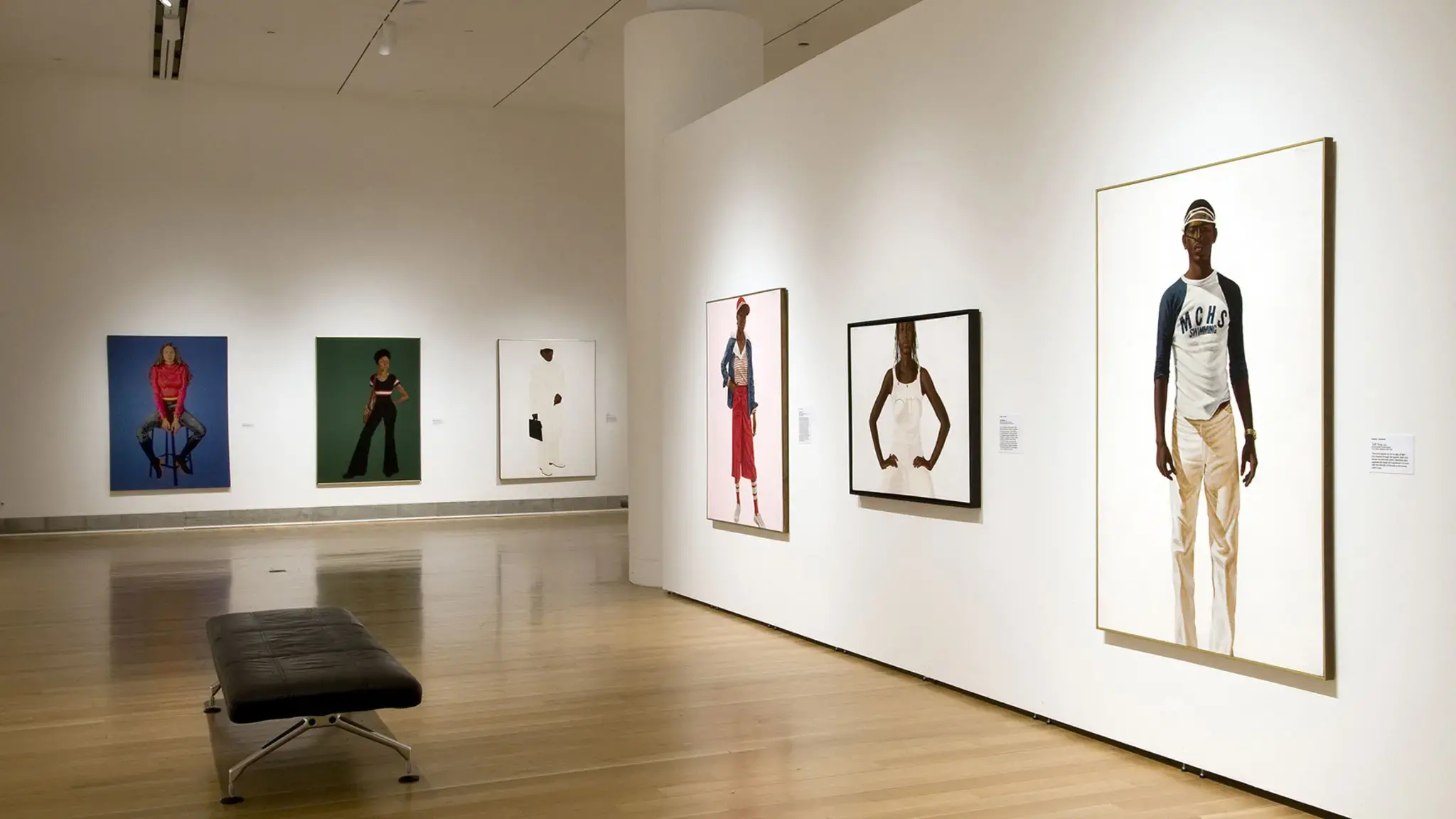Late-career recognition was an underlying subject of Barbara Kasten: Stages. The first major survey of Kasten’s work to date, organized by the Institute of Contemporary Art (ICA) at the University of Pennsylvania, positioned Kasten as a leading light in the “present artistic moment.” Given Kasten’s age—she was born in 1936—the show begged several questions, such as, Who gets to be a contemporary artist? When? And why?
In spring of 2015, we approached several other artists who received heightened recognition later in life in an effort to understand how they see their own contemporaneity. One is Barkley L. Hendricks, whose retrospective traveled to the Pennsylvania Academy of the Fine Arts, his alma mater, in 2009, with Center support. (Hendricks passed away in April 2017.)
In the short essay that follows, Hendricks reminisced about his career beginnings and how he resisted the magnetic pull of New York after graduate school. He suggested that whether or not an artist is deemed contemporary is really about who is doing the talking.
During one of my frequent conversations with visiting professor Lester Johnson while I was a graduate painting student at Yale University from 1970 to 1972, we discussed the New York art scene. Johnson said Gotham City had the “latest of the late syndrome,” by which he meant that the Big Apple was consumed by what was the newest and most up-to-date—or “now”—art works and/or products. This attitude had a correlative in Hollywood, with its star-struck illusions and delusions.
It wasn’t until decades later that I discovered Johnson was actually one of those artists about whom much had been written, and who has been touted as one of the important voices of modern and contemporary art. In other words, he was part of the latest of the late syndrome.
Yale’s close proximity to the city and the presence on campus of Manhattan heavyweights helped to set the stage for a New York state of mind in many of my fellow students. I was less enthralled by the ideas and individuals associated with the perspectives and aura of the Apple. Hailing from Philadelphia, I had been only 90 minutes away from New York during my youth and early adulthood. While other students took regular trips south from New Havento bask in the offerings, I took frequent trips to New Jersey to fulfill my military obligation to the National Guard. En route, I made the Port Authority a way station and creative outpost. It was there that I took many of the photographic studies that were required for the classes I took with Tom Brown and especially Walker Evans. I was learning what went into the making of a photographer. (I suppose with the variety of devices available today, everyone is a photographer.)
No doubt “everything” and “everyone” can be said about what is and is not art, and, more importantly, who gets to be an artist. The early wall images in Africa, France, and elsewhere anointed those practitioners into the club or fellowship of artists as digital images might today. But as to the question of who gets to be a “contemporary” artist, in today’s time and space, it is the written word, in the form of headlines, that is the decider. The hype of the word, the product, and the myth of the artist are nearly interchangeable and almost totally dependent on each other. If one or any are gone, did one or any exist? It’s the tree, sound, and forest scenario. Unquestionably, the exchange of fiduciary respect in the form of market recognition goes a long way to redress this conundrum.
A darling little girl of nine or 10 skipped past me several years ago in the Yale University Art Gallery on the way to her waiting mother at the exit. Just as she reached her mom’s outstretched hand, the girl pointed to a large abstract painting and in a cherubic voice announced to all within earshot, “I could do that!” She was so close to me she turned and smiled before joining her mother. I smiled back and responded, “You sure could, little lady, you sure could.” Perhaps this is the way contemporary artists are made: they just say it or think it, and it is so.









